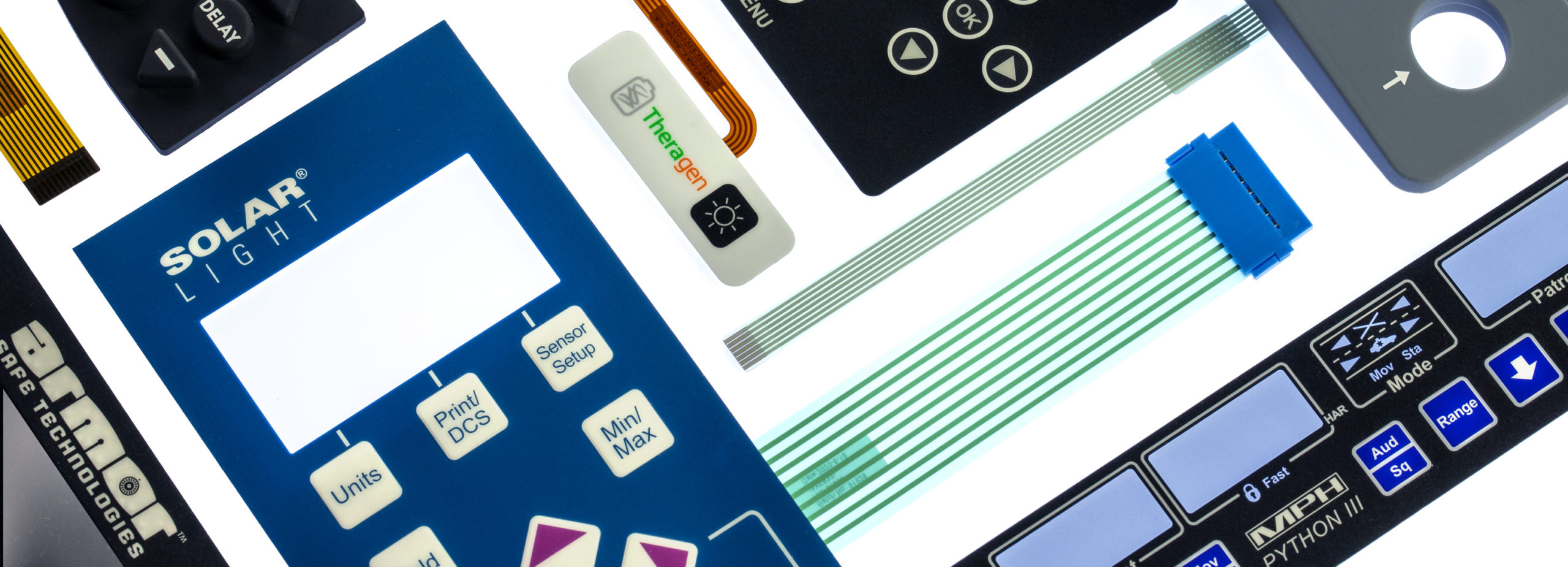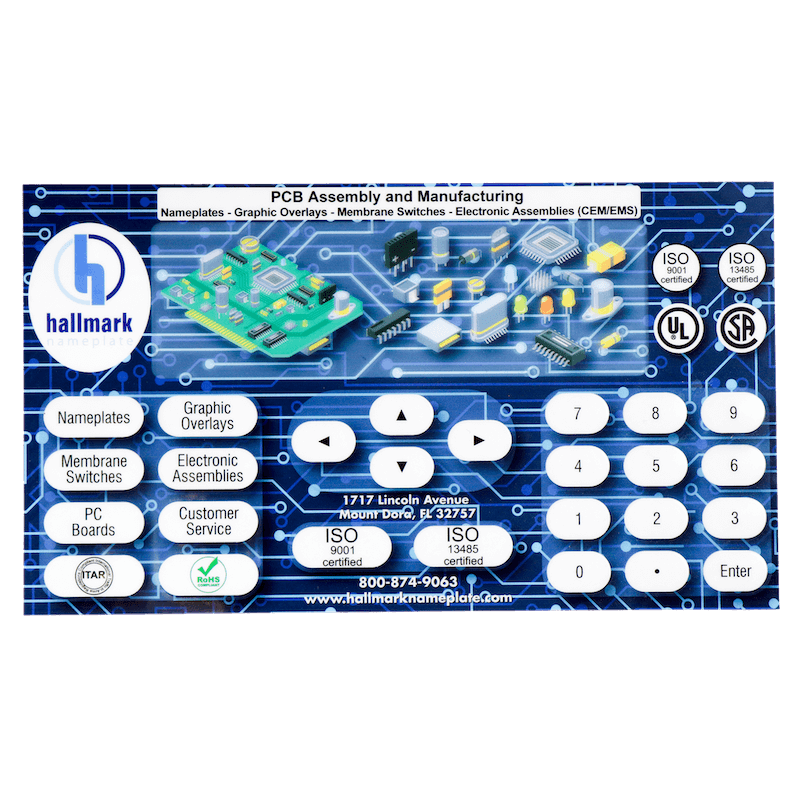How Membrane Switches Are Revolutionizing User Interface Design
How Membrane Switches Are Revolutionizing User Interface Design
Blog Article
Comprehending the Significance of Membrane Switches in Interface
Membrane switches are indispensable elements in the layout of efficient interface, assisting in not only capability but additionally enhancing visual allure and customer communication. Their one-of-a-kind functions, such as resistance to adjustable designs and ecological factors, make them ideal for a diverse selection of applications throughout numerous sectors. As we discover the various advantages and future fads connected with Membrane innovation, it comes to be clear that these switches are greater than simply components; they represent a merging of innovation and functionality. The effects of this technology on user experience are worth checking out further.
What Are Membrane Buttons?

The spacer layer, which includes adhesive residential or commercial properties, allows for the splitting up of the circuit layer from the overlay, making certain that the button remains in a non-activated state until pushed. When pressure is applied to the overlay, it presses the spacer layer, connecting the gap and finishing the circuit in the underlying layer. This layout not only reduces the physical room required for traditional mechanical buttons however also boosts the resilience of the device, as Membrane switches are usually immune to dust, dampness, and other ecological aspects.
Commonly located in applications ranging from customer electronics to clinical gadgets, Membrane switches are integral to modern technology, providing a straightforward and effective user interface that lines up with modern style needs.
Advantages of Membrane Switches
While many button innovations exist, Membrane Switches offer distinctive advantages that make them especially preferable in various applications. Among the primary benefits of Membrane buttons is their compact style, which permits for space-saving implementations in gadgets where actual estate is limited. Their thin account not only enhances visual allure but likewise helps with lightweight building and construction.
Another significant benefit is their resistance to ecological factors. Membrane switches are normally secured against moisture, dust, and pollutants, making them excellent for use in demanding atmospheres, such as clinical tools and commercial equipment. This sturdiness prolongs the life-span of the button, reducing maintenance costs and improving dependability.
Additionally, Membrane buttons can be tailored to fulfill details layout requirements, incorporating distinct graphics and colors that enhance user interaction. Their tactile feedback options can also be tailored to provide a satisfying user experience. Additionally, Membrane buttons are cost-efficient, specifically in high-volume applications, as they can be generated successfully.
Applications in Various Industries

In the consumer electronic devices industry, Membrane buttons prevail in tools such as microwaves, washing machines, and remotes. Their tactile responses and aesthetic alternatives improve user experience while giving a sleek, modern-day look. In addition, vehicle manufacturers use Membrane switches in control panel controls and infotainment systems, where room is limited, and customer engagement is essential.
Furthermore, the commercial industry leverages Membrane buttons in control panels for machinery and tools, enabling user-friendly operation in typically rough atmospheres. Their resistance to chemicals and dampness ensures durability and integrity in these applications. In general, the flexibility of Membrane Switches contributes dramatically to their widespread use, making them essential in different technical domains.
Layout Considerations for Membrane Switches

When designing Membrane switches, a number of crucial factors to consider learn this here now have to be taken into consideration to guarantee ideal performance and individual experience. To start with, the selection of products is critical; selecting resilient, premium substratums can improve the switch's durability and resistance to environmental elements such as wetness and temperature changes.
Second of all, the style of the graphic overlay should focus on quality and convenience of use. Icons and text have to be understandable, and the design ought to help with intuitive communication (membrane switches). In addition, tactile feedback is essential; including a responsive dome or other mechanisms can boost the individual experience by offering physical verification of activation
An additional essential factor is the button's electrical performance. Developers should ensure that the conductive traces are effectively developed to minimize resistance and stay clear of signal interference. This entails examining the required actuation pressure and making sure compatibility with the electronic elements they will user interface with.

Future Patterns in Membrane Technology
As innovation continues to development, Membrane buttons are poised to advance considerably, driven by technologies in materials and producing strategies. One emerging pattern is the unification of innovative products, such as adaptable substrates and conductive inks, which improve durability and decrease the total weight of Membrane switches. These materials not only boost the responsive response however additionally permit for the design of switches that can stand up to harsher ecological conditions.
Additionally, the combination of touch-sensitive modern technologies is changing traditional Membrane Switches into more interactive individual interfaces. Capacitive touch sensing units installed within Membrane button panels can provide a more responsive and user-friendly customer experience, straightening with the expanding need for streamlined, modern designs in consumer electronics.
Additionally, developments in printing methods, such as digital and 3D printing, allow fast prototyping and personalization of Membrane switches. This flexibility allows producers to respond much more rapidly to market demands and consumer choices.
Last but not least, sustainability is coming to be a substantial emphasis, with makers checking out green products and processes. As these trends unfold, the future of Membrane modern technology guarantees improved functionality, aesthetic allure, and ecological obligation, solidifying their role i thought about this in innovative interface my company across various industries.
Verdict
Finally, Membrane Switches represent an essential element in the design of customer interfaces, integrating performance with aesthetic adaptability. Their advantages, including durability and resistance to ecological aspects, make them suitable for varied applications across numerous sectors. Furthermore, thoughtful design factors to consider enhance customer interaction and experience. As improvements in modern technology proceed, the evolution of Membrane switches is anticipated to more refine user interfaces, driving advancement and boosting usability in a progressively complicated technological landscape.
Membrane switches are essential components in the design of efficient user interfaces, facilitating not just functionality but additionally improving aesthetic charm and customer communication.Membrane Switches serve as an essential component in numerous individual interfaces, assisting in a smooth interaction in between users and digital devices.While various button innovations exist, Membrane Switches deal distinctive benefits that make them especially desirable in various applications.In addition, Membrane buttons can be customized to satisfy particular layout demands, including unique graphics and colors that boost user interaction.In conclusion, Membrane Switches stand for a vital element in the style of customer interfaces, combining performance with visual adaptability.
Report this page